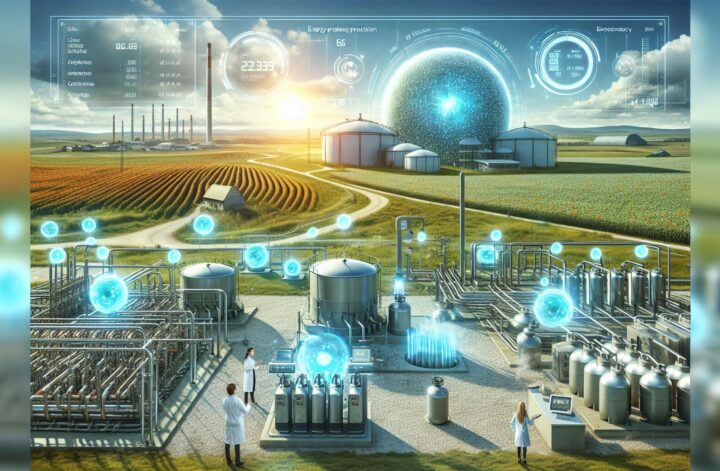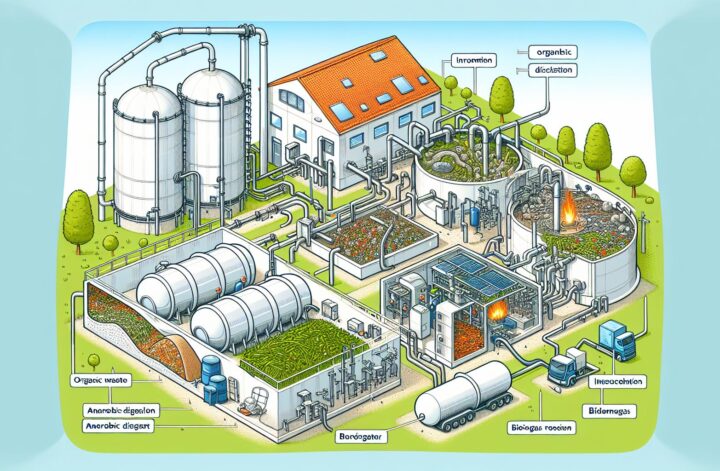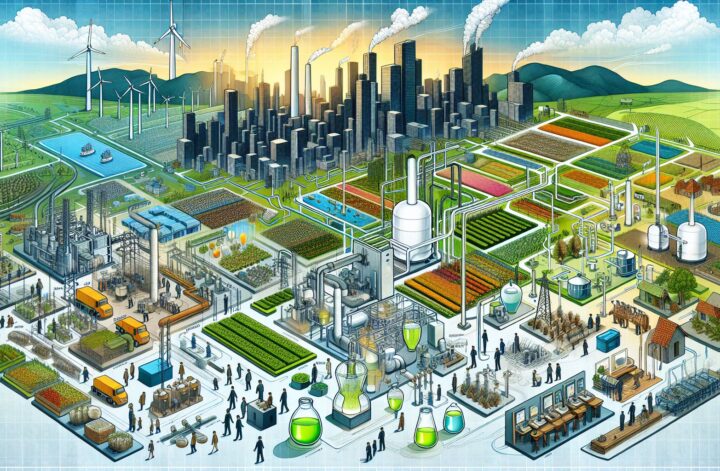In today’s world, where sustainability has become a crucial focus, renewable energy sources have gained significant attention. One such renewable energy source often overlooked despite its massive potential is biogas. This article will delve into the details of biogas production, its benefits, applications, and its role in shaping a future with reduced dependence on fossil fuels.
Understanding Biogas
Biogas is a type of biofuel produced from the decomposition of organic matter in the absence of oxygen, a process known as anaerobic digestion. The primary constituents of biogas are methane (CH4) and carbon dioxide (CO2), with traces of other gases. The organic matter used in the production can be agricultural waste, manure, sewage, green waste, or food waste[^1^].
Biogas Production Process
1. Anaerobic Digestion
Anaerobic digestion is the cornerstone of biogas production. It involves the breakdown of organic materials by specialized microorganisms in an oxygen-free environment. This process takes place in a digester, typically at a temperature between 25-45°C (mesophilic digestion) or 50-60°C (thermophilic digestion). The digestion process can be divided into four main stages, namely hydrolysis, acidogenesis, acetogenesis, and methanogenesis[^2^].
Hydrolysis
In this initial phase, complex organic matter like proteins, carbohydrates, and fats are converted into simpler compounds, such as sugars and amino acids, by the enzymes produced by hydrolase bacteria.
Acidogenesis
The soluble compounds are further broken down by acidogenic bacteria into volatile fatty acids and alcohols, along with gases like hydrogen and carbon dioxide.
Acetogenesis
Acetogens convert the by-products of acidogenesis to produce acetic acid, CO2, and hydrogen.
Methanogenesis
Methanogens, a kind of Archea, convert the acetic acid and hydrogen to methane and carbon dioxide – the primary components of biogas.
Benefits of Biogas Production
Greenhouse Gas Reduction
The methane produced during biogas production has a significantly higher greenhouse effect than carbon dioxide. Thus, capturing and using this methane for energy production helps in the reduction of greenhouse gas emissions[^3^].
Waste Management
Biogas production also assists in effective waste management. It utilizes organic waste, such as agriculture, municipal, or industrial waste, and turns it into a valuable energy source instead of being dumped into landfills.
Renewable Energy Source
Biogas production provides a renewable source of energy that can be steadily produced and controlled. It can be stored for use during periods of peak demand, making it a reliable energy source.
Applications of Biogas
Power Generation
Biogas can be used in cogeneration or combined heat and power (CHP) systems. In these systems, biogas is used to produce electricity, while the waste heat is recovered and used for heating purposes.
Vehicle Fuel
Upgraded biogas, also known as biomethane, can be used as vehicle fuel. This biomethane has similar properties to natural gas, making it an excellent fuel option for natural gas vehicles.
Cooking Fuel
Biogas can be used as a cooking fuel in rural areas where traditional sources of energy may not be readily accessible.
Biogas production indeed presents an exciting opportunity in the world of renewable energy. Harnessing the potential that lies in waste to produce energy offers a pathway to address the dual challenge of waste management and energy generation.
Optimized anaerobic digester design, technological innovations in biogas scrubbing, and steps to resolve issues such as inhibition of anaerobic digestion, ammonia toxicity, sulfide toxicity, and the requirement of trace element supplementation, can further enhance the efficiency of biogas production.
By adopting processes like co-digestion, high-rate anaerobic digestion, and biosolid management practices, we can pave the way towards a sustainable future with lesser dependence on fossil fuels and greater utilization of renewable sources of energy.
References
[^1^]: US Environmental Protection Agency: Anaerobic Digestion
[^2^]: The Biogas Handbook, Woodhead Publishing
[^3^]: UNEP, Global Methane Initiative
Disclaimer: This article is intended for informational purposes and should not be considered expert advice.




